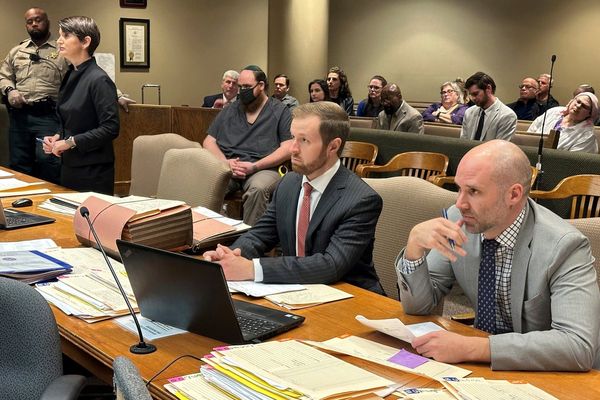
Retirement fund erosion doesn’t always happen with a crash. Sometimes it’s a quiet leak—a slow, steady drain you don’t even notice until it’s too late. The numbers may still look solid on your statements, but behind the scenes, fees, inflation, misallocations, and poor withdrawal strategies could be eating away at your future.
For millions of Americans, the real threat to retirement security isn’t market crashes or bad luck. It’s complacency. You might not realize you’re losing money in plain sight until your “golden years” don’t feel so golden.
If you’re saving diligently but still feeling like you’re not getting ahead—or if you’ve already retired and your account balance seems to vanish faster than expected—read on. These are the 10 most common (and most overlooked) ways retirement funds are quietly being devoured.
1. Your Investment Fees Are Higher Than You Think
Most people never bother to look closely at their fund fees. And that’s a costly mistake. Management fees, administrative charges, and advisor commissions can quietly siphon off thousands of dollars over the years.
Even a 1% annual fee on a retirement portfolio can reduce your total savings by tens of thousands over the long term. Worse, these fees compound over time, just like your investments, except in the wrong direction. If you’ve never reviewed your expense ratios or advisor charges, you may be paying far more than necessary for lackluster performance.
2. Inflation Is Outpacing Your Growth
Inflation is one of the most insidious enemies of retirement savings. Even when your account appears to grow on paper, inflation may be stealing your purchasing power behind the scenes.
If your investments are earning 4% annually but inflation is running at 3.5%, your “real” return is just 0.5%. Over time, this subtle erosion can leave you with far less than you expected, especially when your expenses continue to climb while your income stays flat.
3. You’re Taking Withdrawals Too Early
It’s tempting to dip into your retirement accounts early, especially when an emergency hits or income feels tight. But every dollar withdrawn before retirement not only reduces your future nest egg, it also interrupts compounding growth.
Even small withdrawals made in your 50s can have long-term consequences. You’re not just losing the money you took out. You’re forfeiting decades of interest that money would’ve earned. That financial shortcut today may become a shortfall tomorrow.
4. Your Asset Allocation Is Out of Date
The right mix of stocks, bonds, and cash depends on your age, goals, and risk tolerance. But many retirees set their allocation once and forget it. As a result, they may be too conservative or too aggressive without realizing it.
If you’re too conservative, your money may not be growing fast enough to keep pace with inflation. If you’re too aggressive, you risk sharp losses in a market downturn that could derail your plans. Either scenario can eat away at your savings quietly and quickly.
5. Required Minimum Distributions Are Catching You Off Guard
Once you hit age 73, you’re required to begin taking minimum distributions (RMDs) from most retirement accounts. Many retirees aren’t prepared for the tax hit those distributions bring.
These mandatory withdrawals can push you into a higher tax bracket, trigger Medicare premium increases, or lead to inefficient withdrawals. If you haven’t accounted for them in your long-term plan, they could erode your savings faster than expected.
6. You’re Holding Too Much in Cash
While cash feels safe, it can quietly drain your portfolio if it’s not earning enough interest. Sitting on large amounts of uninvested money, whether in a low-yield savings account or a money market fund, leaves your retirement fund exposed to inflation.
Over time, what looks like a stable strategy actually loses value in real terms. Worse, some retirees become overly cautious after a market dip and never reinvest, locking in losses and limiting future growth.

7. You’re Paying Hidden Taxes Without Realizing It
Taxes are one of the most overlooked ways retirement funds get drained. Whether it’s capital gains taxes from mutual fund turnover, unexpected Medicare surcharges, or poorly timed Social Security withdrawals, tax inefficiencies can be costly.
If your withdrawals aren’t tax-optimized or you’re not coordinating your income sources strategically, you may be handing over more to the IRS than necessary, leaving you with less to live on and less to grow.
8. You’re Ignoring Healthcare and Long-Term Care Costs
Healthcare is one of the biggest expenses in retirement, and also one of the most underestimated. Without proper planning, these costs can eat through savings at an alarming pace.
Whether it’s out-of-pocket Medicare costs, uncovered treatments, or long-term care services like assisted living or home care, these expenses rarely come cheap. If your retirement fund doesn’t account for this, you may be draining it faster than planned, simply trying to stay healthy.
9. You’re Falling for “Safe” Investments That Underperform
Not all conservative investments are created equal. Some retirees move their funds into overly “safe” vehicles like annuities, certificates of deposit, or low-yield bonds without understanding the tradeoffs.
While these may offer security, they often fail to generate the growth needed to outpace inflation or withdrawals. Worse, some come with restrictive terms or high fees. If safety comes at the cost of long-term sustainability, your retirement fund may be quietly shrinking while you feel falsely reassured.
10. You Haven’t Adjusted for Longer Life Expectancy
It’s a good thing we’re living longer, but it also means retirement needs to be funded for 20, 30, even 35 years. Many people underestimate how long their savings need to last and fail to adjust their withdrawal rates accordingly.
Spending too freely in early retirement can leave you struggling later on. If you’re drawing down your savings too quickly, your portfolio might not last through your 80s or 90s, even if things look fine today.
What You Can Do Now to Protect Your Nest Egg
The good news is that these threats aren’t irreversible. But you do need to act. Start by reviewing your investment fees and adjusting your asset allocation to match your current stage in life. Consult a fiduciary financial planner who understands retirement strategies, not just market returns.
Run a detailed retirement income projection to see how long your savings will last under different inflation and withdrawal scenarios. Reassess your cash position and make sure your emergency fund isn’t bleeding value. And most importantly, make tax-efficient decisions about when and how to draw income from different accounts. Remember: A shrinking retirement fund doesn’t always look like a crisis until it suddenly is.
Are You Unknowingly Losing Retirement Dollars?
Have you checked your statements and fees lately? What’s one thing you’ve done or plan to do to stop the silent drain?
Read More:
7 Retirement Perks That Quietly Vanished This Year
10 Things That Instantly Reveal You’re Not Ready for Retirement







